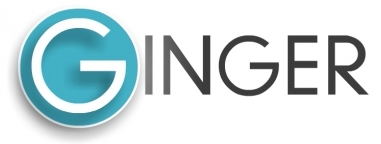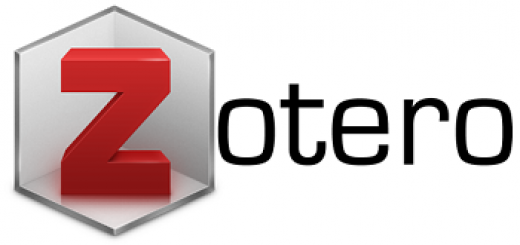DIFFERENT CONCEPTS OF CYBORGS IN KAZUO ISHIGURO’S KLARA AND THE SUN
Abstract
Keywords
Full Text:
PDFReferences
Bashota, H., Halili, M. B., Sadiku, A., Zeqiri, L., Millaku, X., & Lama, A. (2022). Posthumanism and The Role of Technology: Between Myth and Metaphor in H.G. Wells’ Dystopian Novel The Time Machine. Eurasian Journal of Applied Linguistics, 8(2), 249–258. https://doi.org/10.32601/ejal.911558.
Cahyo, P. S. N., & Suryaningtyas, R. E. (2020). Woman and Technology: A Study on Gender Portrayal of a Female Cyborg in Ghost in the Shell (2017) Movie. Lire Journal (Journal of Linguistics and Literature), 4(1), 26–39. https://doi.org/10.33019/lire.v4i1.65.
Castle, G. (2013). Literary Theory. In Encyclopedia of Sciences and Religions. https://doi.org/10.1007/978-1-4020-8265-8_100616.
Clynes, M., & Kline, N. (1960). Cyborgs and space. Astronautics, pp. 26–27, 74– 75.
Cooper, S. (2010). Questions Concerning Technoculture. Science as Culture, 19(2), 255–258. https://doi:10.1080/09505430903214435.
Endraswara, Suwardi. 2020. “Kajian Posthumanisme Sastra di Era Pandemi Corona.” Prosiding Seminar Nasional Bahasa dan Sastra Indonesia (SENASBASA) 4(1).
Frederick, S., & X, H. J. (2021). Speculating the Posthuman Scenario of Man vs Machines in Kurt Vonnegut’s Player Piano. Journal of Language and Linguistic Studies. www.jlls.org:...31/07/2021AcceptanceDate:..25/11/2021.
Gumanay, J. (2021). More Human Than Human: Posthumanism In Literary Discourse. International Journal of Humanity Studies, 4(2), 142–151. https://doi.org/10.24071/ijhs.v7i1.6265
Hall, G. (2017). The Posthuman. Pirate Philosophy, pp. 85–126. https://doi.org/10.7551/mitpress/9780262034401.003.0004.
Hampton GJ (2015) Imagining slaves and robots in literature, film, and popular culture. Lexington Books, Lanham.
Haraway, D. J. (1985). A Cyborg Manifesto. In Manifestly Haraway. https://doi.org/10.5749/minnesota/9780816650477.003.0001.
Hayles, N. K. (1999). How We Become Posthuman (Issue September 2016).
Herbert, J. X. (2021). Kurt Vonnegut’s Cat’s Cradle, a fictional framework of Posthumanism : The interdependent similarities between the novel and the theory. 14, 213–220.
Ishiguro, K (2021). Klara and the Sun. New York : Alfred A. Knopf.
Kiran, A., & Lodhi, M. A. (2021). Human Identity and Technophobic Posthumanism in Octavia Butler’s Dawn. Indiana Journal of Arts & Literature, 1–15.
Manullang, J. (2022). Relasi Manusia dan Non-Manusia dalam Film Inang (The Womb). Jurnal IMAJI: Film, Fotografi, Televisi, Dan Media Baru, 13(3), 202–209. https://doi.org/10.52290/i.v13i3.83.
Mufidah, Z. (2023). Post Human And Female Cyborg In The Perfect. Jurnal Penelitian Ilmu Ushuluddin, 2023 - Etheses.Uinsgd. Ac.Id, pp. 8, 247–260.
Pepperell, R. (2003). The posthuman condition is consciousness beyond the brain. In The Posthuman Condition Consciousness Beyond the Brain (Issue January, 2003). https://doi.org/10.13140/2.1.2140.1289.
Putra, B. D., & Hambali, R. Y. A. (2023). Cyborgs dan Perempuan Menurut Pandangan Posthumanisme Donna J. Haraway. Jurnal Penelitian Ilmu Ushuluddin, 3(1), 37–51. https://doi.org/10.15575/jpiu.19521
Rizal, M., & Rahayu, R. D. (2023). Dari Humanisme Ke Poshumanisme : Sebuah Penulusuran Nilai-Nilai Toleransi Dalam Film Ex Machina ( 2014 ) Dan Artificial Intelligence ( 2001 ). 51(1), 98–116.
Saeed, A., Ahsan, S., & Haque, A. (2020). From Cyborg to Other: Reframing Identities within the dystopian world in Marge Piercy’s He, She and It. International Journal of Disaster Recovery and Business Continuity, 11(3), 3104–3112. https://www.researchgate.net/publication/349694338.
Salyers, C. (2011). What Is Posthumanism? In Environmental Philosophy (Vol. 8, Issue 1). https://doi.org/10.5840/envirophil20118111.
Scholes, R. (2005). What is happening in literary studies?. Learned Publishing.
Sorgner, S. L., & Javanovic, B.-R. (2013). Beyond Humanism : Trans-And Posthumanism.
Stenseke, J. (2022). The Morality of Artificial Friends in Ishiguro’s Klara and the Sun. Journal of Science Fiction and Philosophy, 5(Kant, 1785).
Styrnik, N. (2021). Posthumanism Ideas In D. H. Lawrence’s Short Stories Nataliia. Primedia ELaunch LLC.
Susanto. (2021). Children And Robot: Posthumanism Reading On Riko The Series Susanto Children And Robot: Posthumanism Reading On Riko The Series. 4th English Language and Literature International Conference (ELLiC) Electronic ISSN: 2579-7263 Proceedings, pp. 4, 437–441. https://garissepuluh.com/riko-the-series/.
DOI: https://doi.org/10.18860/prdg.v7i2.29423
Refbacks
- There are currently no refbacks.

This work is licensed under a Creative Commons Attribution-ShareAlike 4.0 International License.
Member of:
Indexed by:
Editorial Office
Department of English Literature
Faculty of Humanities, Universitas Islam Negeri Maulana Malik Ibrahim Malang
Jalan Gajayana 50 Malang, Jawa Timur, Indonesia 65144
Phone (+62) 341 551354, Facsimile (+62) 341 572533
e-mail: paradigm@uin-malang.ac.id

PARADIGM: Journal of Language and Literary Studies by Department of English Literature is licensed under a Creative Commons Attribution-ShareAlike 4.0 International License.
Based on a work at http://ejournal.uin-malang.ac.id/index.php/paradigm.
View My Stats | Follow Us on Instagram





